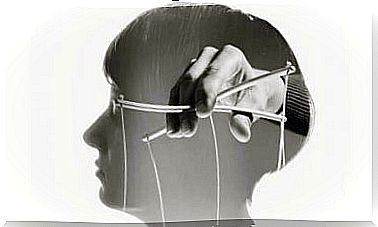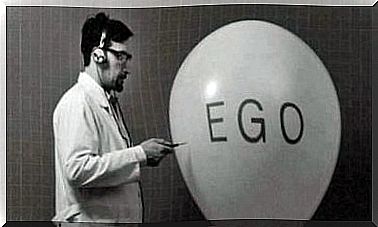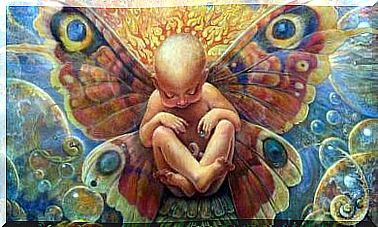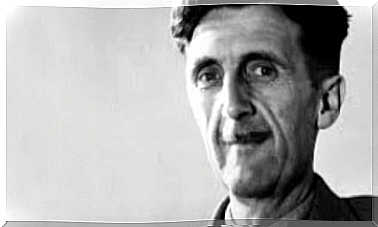Hunger Theories: Why Do We Eat?

It is noon and you are hungry. You get more and more hungry. You must eat now! You’re busy right now, though, so you can’t. Now it’s four in the afternoon and you’re not hungry anymore. How many times have you heard “I’m not hungry anymore”? There are many theories of hunger that point us to different answers to the question: why do we eat?
The answer may seem simple: you eat because you are hungry. But is that really the case? In part yes, but why does hunger often go away after a while? When you eat your favorite meal, why are you eating more than you really need? “I’m not hungry anymore, but I like it so much.”
In this article, we present the most popular theories of hunger, which accurately explain our eating behavior and answer the previous question.
The setpoint theory
The set point theory attributes hunger to a lack of energy. So when you eat, you restore your optimal energy level. This is known as an energy target.
According to this theory, a person eats until he feels satisfied. At this point, you will stop eating because you have recovered the target (set point) . Therefore, the food has fulfilled its function. As a result, you stop eating until the body has used up enough energy to drop below the set point.
The setpoint systems consist of three components:
- Adjustment Mechanism: It sets the target value.
- Identification Mechanism: It identifies any deviations from the desired value.
- Mechanism of action: It is a mechanism that eliminates the abnormalities.
All setpoint systems (Wenning, 1999) are negative feedback systems. In other words, the feedback resulting from changes in one direction causes compensatory effects in the opposite direction.
These systems are usually found in mammals and aim to maintain homeostasis. If this theory were 100% true, you would stop eating after reaching your target. However, this isn’t always the case, right?
Glucostatic Setpoint Theory
In the mid-twentieth century, several researchers were convinced that people ate to maintain their blood sugar levels. This is the glucostatic set point theory. In other words, you eat when your blood sugar level drops and stop eating when you get it back to normal.
Lipostatic set point theory
According to this theory, every person has a certain target level when it comes to body fat. People then eat to restore this target value.

Limitations of the setpoint theories
The first limitation of these theories is that they do not take into account the influence of taste, education and social factors. This becomes apparent when it comes to your favorite food or being at a social gathering.
Just imagine that your favorite food and another food that is not so tasty are on the same table. You probably won’t eat a lot of the foods you don’t like. However, you will probably eat a lot of the foods you like, even if you are already full. In other words, it is possible to eat even when you are not hungry.
Lowe (1993) stated that more than 50% of Americans have a significant excess of fat when they start eating. This also applies to people who have a surplus of fat and still continue to eat. So this point also shows that the set point theories are not quite right.
If these theories were accurate, man would not have survived to this day. Pinel, Assanand, and Lehman (2000) stated the following:
“The set-point theories of hunger and eating are inconsistent with the fundamental evolutionary pressures of hunger and eating as these concepts are currently understood.”
The authors explained that our ancestors had to eat a lot of food in case they couldn’t find it later. Therefore, they had to store calories in the form of body fat. If the set point theory was correct, they would have stopped eating once the abnormalities were corrected. However, if they had nothing to eat, they would also have no calorie reserves.
Positive-stimulating perspective
According to the positive-stimulating theory, humans and other animals are normally not motivated to eat because of a lack of energy, but are motivated to eat by the expected eating pleasure or positive-stimulating value (Booth, 1981).
This theory hypothesizes that hunger stems from the historical pressures we have suffered from lack of food. So, instead of a lack of energy, hunger is caused by the presence of tasty food or just the thought of it. Your hunger level depends on the interaction of several factors:
- taste
- what you learned about the effect of food
- the time elapsed since you ate your last meal
- the amount and type of food you are currently digesting in your gut
- whether there are other people around or if you are eating alone
- the state of the blood sugar level
Hunger theories: not everything is as it seems
In this overview of the main theories of hunger, we have seen that the answer to the question of why we eat is not so simple. Something as common and regular as food is not so easy to explain. That’s because we don’t just eat when we’re hungry, but also because we like certain foods.
On the other hand, Jaime Silva (2007) emphasizes that emotions and mood also influence food consumption. Silva says the following about this:
“ On the one hand, emotional states and moods can influence eating behavior. On the other hand, food can influence emotions and moods. ”
How many times have you eaten more than was necessary to relieve your anxiety? Or how many times have you stopped eating because of the food? Without a doubt, hunger is something that needs further investigation.









